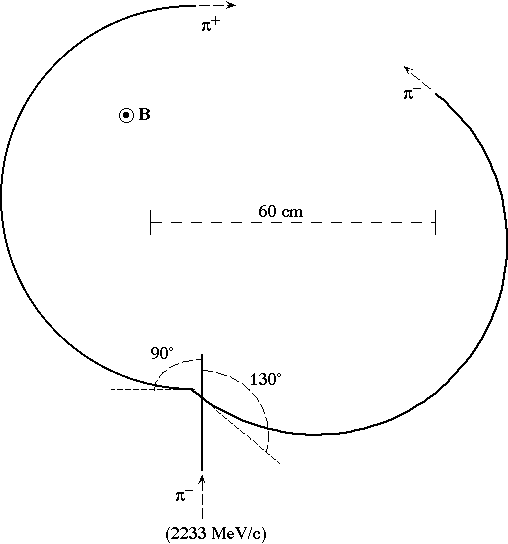
PHY357S: Wednesday, 7 January 1998
(a) What is the electrostatic repulsive force (in MeV/fm) between two protons 1fm apart? (Assume the protons are non-overlapping spheres.) (b) The proton-neutron separation in a deuteron is about a femtometre. (The mass of the deuteron is given in F&H Appendix A2.) Assume the strong force is approximately constant strength for distances up to a few fm and is neglible at longer distances. Estimate roughly the strong force (in MeV/fm) between the two nucleons in a deuteron and compare it to your answer in part (a).
The highest energy cosmic rays yet observed have an energy of about 1021eV and are thought to be protons. (a) What is the total energy, W, in the c.m. frame if a 1021eVcosmic ray interacts with a stationary interstellar proton? (b) Consider a colliding beam experiment in which two protons collide head-on with equal and opposite momentum. How much energy, E, must the protons have in order to for the colliding beam experiment to have the same W as in part (a)? (c) If the Stanford electron linac was extended in a straight line so that its electrons had the same energy, E, as your answer to (b), how long would it have to be? (d) Assume the linac from (c), instead of being straight, is built on the surface of the earth (if necessary, wrapped mulitple times around the earth's circumference of 40000km). What would be the maximum energy of the electrons coming out of the accelerator?
Consider a detector which counts (with 14% efficiency) the ion pairs produced by charged particles passing through 25 mm of air. How well could such a detector tell whether a 16 GeV/c charged particle was an alpha particle or a proton?
A negative pion (with momentum 2233 MeV/c) interacts in the 3.6m hydrogen bubble chamber of the Argonne National Laboratory. An annotated scaled diagram of the interaction is shown on the next page. The only particles produced in the initial interaction are two secondary neutral particles: one of these particles decays into two tertiary charged pions a small distance away, the other is not seen at all. (a) What are the masses of the two secondary neutral particles produced in the initial interaction? (b) What are the secondary neutral particles and what do they decay into? (If you think there are multiple possibilities, list and explain them all.)
The heavy lines are the charged particle tracks. The tracks all lie in the plane of the paper; the magnetic field is perpendicular to the plane of the paper. The initial angles of the tertiary p+ and p- are shown. The drawing is about 1/6 scale, but the exact scale should be determined from the "60 cm" line.
